Keeping up with vehicle maintenance is actually a great way to prevent big problems down the road. Back in the day, you had to keep a log in the owner’s manual or use a separate piece of paper, and hope you didn’t forget when you were supposed to do what. Fortunately, today we can manage things much easier with car maintenance apps.
You likely keep your phone, tablet, or other mobile device nearby most of the time. By installing one of these apps, there literally will be no excuse for not taking better care of your car. The old-school paper service logs were hard to use, mostly because you inevitably forgot to enter different items. With your phone or tablet pushing out alerts on a regular basis, it’s basically impossible to forget taking care of your vehicle.
Each of the car maintenance apps listed below is available for both Apple iOS and Android, which covers virtually all of the smartphones in existence today. That means there’s no feeling like you need to buy a new device just to take better care of your ride.
MyCarFax
 Check out the MyCarFax app. It can help you track the maintenance needs of up to five vehicles at a time, which is great for households with multiple drivers. Adding a vehicle can be done by entering the VIN or license plate number. If you prefer an easier method, you can also scan the bar code next to the VIN. This app tracks not only upcoming maintenance items needed such as tire rotations and oil changes, but also open recalls.
Check out the MyCarFax app. It can help you track the maintenance needs of up to five vehicles at a time, which is great for households with multiple drivers. Adding a vehicle can be done by entering the VIN or license plate number. If you prefer an easier method, you can also scan the bar code next to the VIN. This app tracks not only upcoming maintenance items needed such as tire rotations and oil changes, but also open recalls.
When you take your vehicle to a service shop, the maintenance log is updated automatically, so there’s no having to type in all of the information manually. The big advantage of this app is that it draws on the 12 billion records available through the CarFax database. Another unique aspect is that it can recommend local service shops, showing user ratings, so if you’re in an unfamiliar region you can make a more educated decision.
AutoCare
 Also available for Android and Apple users is AutoCare. Although it’s not free, the app can help you manage multiple vehicles with customizable service reminders, making it a useful auto maintenance app. The ability to customize alerts is actually a truly great feature, because say if you use synthetic oil and can stretch out oil changes further, the app will accommodate that instead of bugging you to change the oil too early.
Also available for Android and Apple users is AutoCare. Although it’s not free, the app can help you manage multiple vehicles with customizable service reminders, making it a useful auto maintenance app. The ability to customize alerts is actually a truly great feature, because say if you use synthetic oil and can stretch out oil changes further, the app will accommodate that instead of bugging you to change the oil too early.
AutoSprite
For the financially-minded, AutoSprite is an ideal car maintenance app. Like other options, it helps track when your vehicles need servicing and exactly what kind, providing easy-to-read reminders. You can use the app to even book an appointment at a compatible service center.
Where this option really shines is that it allows you to see a list of expenses you’ve paid during a defined period of time for vehicle maintenance, making it easier to track trends. It also can help with shopping for good insurance rates, something you can do periodically to save money.
RepairPal
 Not only can you track vehicle maintenance records and needs with RepairPal, you can also be better prepared to fix your car. Everyone knows that accidents and unexpected thing happen in life, but this app helps you take it in stride with a one-touch option for roadside assistance. You can also use it to locate a quality local mechanic, plus it provides fair pricing for different jobs so you don’t end up paying too much.
Not only can you track vehicle maintenance records and needs with RepairPal, you can also be better prepared to fix your car. Everyone knows that accidents and unexpected thing happen in life, but this app helps you take it in stride with a one-touch option for roadside assistance. You can also use it to locate a quality local mechanic, plus it provides fair pricing for different jobs so you don’t end up paying too much.
T3 Atlanta
In case you aren’t aware, every vehicle comes with a maintenance schedule. It’s created by the manufacturer and shows when certain items need to be checked and possibly fixed. The schedule can include items such as changing the oil, swapping out an air filter, or inspecting shock boots. Vehicle manufacturers set specific times that the various items should be check over.
While it might seem like a simple thing, keeping the maintenance schedule on a car actually provides a huge benefit. Automakers know the vehicles they designed and built incredibly well. When it’s time to address the various items on the schedule at the designated times, come to T3 Atlanta. You can avoid maintenance problems down the road, saving money and grief with big repairs.
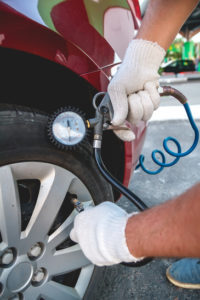 One of the easiest and most essential items for tire care is keeping each tire properly inflated. The vehicle manufacturer actually prints how much air pressure to maintain in the tires, placing the info on the driver’s doorjamb.
One of the easiest and most essential items for tire care is keeping each tire properly inflated. The vehicle manufacturer actually prints how much air pressure to maintain in the tires, placing the info on the driver’s doorjamb.
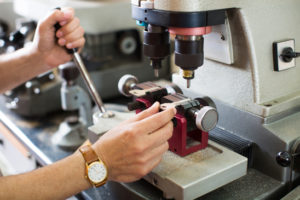 Unfortunately, some people face the problem of lost car keys and absolutely no spare of any kind, so they can’t use the vehicle until they pay for a new key. The simple fact is it can take some time to have a new key made, plus cost a fair amount of money. Getting a key quickly can ratchet up the price significantly, especially at night, on a weekend, or during a major holiday, so if you can hold out there’s a definite reward.
Unfortunately, some people face the problem of lost car keys and absolutely no spare of any kind, so they can’t use the vehicle until they pay for a new key. The simple fact is it can take some time to have a new key made, plus cost a fair amount of money. Getting a key quickly can ratchet up the price significantly, especially at night, on a weekend, or during a major holiday, so if you can hold out there’s a definite reward.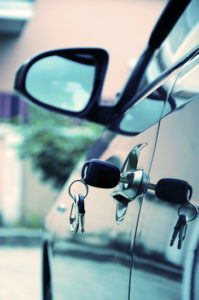 There are some ways to save on the cost of getting a new Toyota key. Multiple websites exist that will allow you to order a key at a fraction of the cost you would pay to go through a dealer. The catch is you’ll have to wait for the key to ship, so if you don’t have a spare, it’s not really the best route to go. If you get a fob or proximity key this way, you still have to go to a dealer, service shop or locksmith to have it programmed, so you won’t save money on that cost. It’s a security measure to have all Toyota owners have their fobs and proximity keys programmed at dealers, certified shops and locksmiths after proving ownership of the vehicle.
There are some ways to save on the cost of getting a new Toyota key. Multiple websites exist that will allow you to order a key at a fraction of the cost you would pay to go through a dealer. The catch is you’ll have to wait for the key to ship, so if you don’t have a spare, it’s not really the best route to go. If you get a fob or proximity key this way, you still have to go to a dealer, service shop or locksmith to have it programmed, so you won’t save money on that cost. It’s a security measure to have all Toyota owners have their fobs and proximity keys programmed at dealers, certified shops and locksmiths after proving ownership of the vehicle. One of the first questions is whether you should get a new or used vehicle? There are special things to consider when buying a used car versus one that’s brand new, so this is a critical point. While it’s nice to have a new car with zero wear on it, the cost might be more than you want or can afford to take on. It’s a good idea to get prequalified for financing, since it gives you a clear picture of what you can afford.
One of the first questions is whether you should get a new or used vehicle? There are special things to consider when buying a used car versus one that’s brand new, so this is a critical point. While it’s nice to have a new car with zero wear on it, the cost might be more than you want or can afford to take on. It’s a good idea to get prequalified for financing, since it gives you a clear picture of what you can afford. Too many times, even experienced shoppers forget to ask about the costs of ownership. Apart from monthly payments, you need to figure out how much you’ll be spending in gas each week. Contact your insurance carrier to learn what premiums will run, because they can go up or down depending on specific models.
Too many times, even experienced shoppers forget to ask about the costs of ownership. Apart from monthly payments, you need to figure out how much you’ll be spending in gas each week. Contact your insurance carrier to learn what premiums will run, because they can go up or down depending on specific models. How many people will be riding in the Toyota? If you need to regularly transport seven people, opting for a sedan like a Camry simply won’t be a wise choice. Alternatively, if only one or two people will ride in the car, you don’t necessarily need to be looking at something as large as a Sequoia.
How many people will be riding in the Toyota? If you need to regularly transport seven people, opting for a sedan like a Camry simply won’t be a wise choice. Alternatively, if only one or two people will ride in the car, you don’t necessarily need to be looking at something as large as a Sequoia.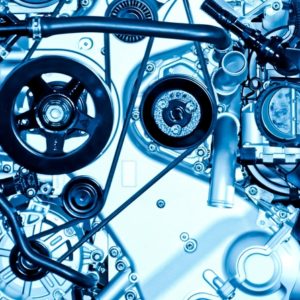 An even bigger deal is the mechanical differences, especially when it comes to engines. The funny thing is there’s little difference, if any at all, in Lexus vs Toyota reliability. Both brands are safe bets if you want to own something that will last a long time without needing repairs constantly. This fact alone is one of the big draws to either option. The reliability for both brands is partly because certain engines are used in Toyota and Lexus models. The Toyota Avalon and Lexus ES are powered by the same 3.5-liter V-6 engine, which is also used in the Highlander, Camry and Lexus RX. The 2.5-liter hybrid powertrain is the exact same as well.
An even bigger deal is the mechanical differences, especially when it comes to engines. The funny thing is there’s little difference, if any at all, in Lexus vs Toyota reliability. Both brands are safe bets if you want to own something that will last a long time without needing repairs constantly. This fact alone is one of the big draws to either option. The reliability for both brands is partly because certain engines are used in Toyota and Lexus models. The Toyota Avalon and Lexus ES are powered by the same 3.5-liter V-6 engine, which is also used in the Highlander, Camry and Lexus RX. The 2.5-liter hybrid powertrain is the exact same as well.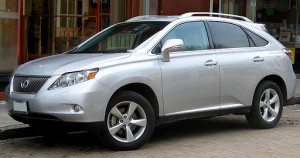 Plenty of people choose to purchase a Lexus and never have any real complaints. They’re highly reliable and are packed with incredible luxuries like soft leather upholstery, seat heaters/ventilation, and wood inlays, to name a few. Lexus has a tremendous reputation for making cars that run smoothly, and interiors that are supremely quiet.
Plenty of people choose to purchase a Lexus and never have any real complaints. They’re highly reliable and are packed with incredible luxuries like soft leather upholstery, seat heaters/ventilation, and wood inlays, to name a few. Lexus has a tremendous reputation for making cars that run smoothly, and interiors that are supremely quiet.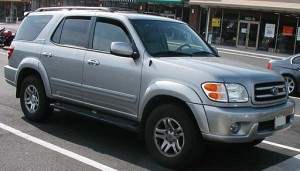 Toyotas are popular for some pretty compelling reasons. Reliability is obviously one, and so is great value retention. Toyotas are plentiful, so you can usually find just the right one without too much hassle. Because they’re popular, it isn’t difficult to find parts, servicing or aftermarket add-ons.
Toyotas are popular for some pretty compelling reasons. Reliability is obviously one, and so is great value retention. Toyotas are plentiful, so you can usually find just the right one without too much hassle. Because they’re popular, it isn’t difficult to find parts, servicing or aftermarket add-ons.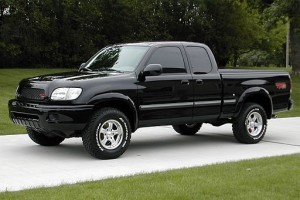 When it first debuted in 1993, the Tundra was called the Toyota T100. It wasn’t until 2000 that the Tundra name was applied to the pickup. Because of the name switch, the truck is technically in its third production generation.
When it first debuted in 1993, the Tundra was called the Toyota T100. It wasn’t until 2000 that the Tundra name was applied to the pickup. Because of the name switch, the truck is technically in its third production generation. The comfort doesn’t stop there. Thanks to the longer wheelbase Toyota uses for the Tundra versus its competitors, the truck takes rough roads and trails with ease. Drivers and passengers will barely feel potholes, speed bumps and rocks as they roll right over them. Add to that the smooth-operating 5.7-liter V-8 engine, which doesn’t make all kinds of unnecessary noise, and you have a pickup that’s more than livable on a daily basis.
The comfort doesn’t stop there. Thanks to the longer wheelbase Toyota uses for the Tundra versus its competitors, the truck takes rough roads and trails with ease. Drivers and passengers will barely feel potholes, speed bumps and rocks as they roll right over them. Add to that the smooth-operating 5.7-liter V-8 engine, which doesn’t make all kinds of unnecessary noise, and you have a pickup that’s more than livable on a daily basis.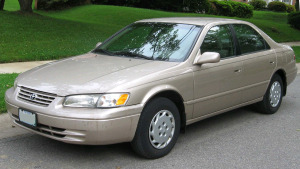 In case you aren’t aware of the history of the Camry, here’s a brief overview. The car originally was launched as the Celica Camry in 1979. It wasn’t a runaway hit overnight, but started to pick up serious momentum in the mid-80s.
In case you aren’t aware of the history of the Camry, here’s a brief overview. The car originally was launched as the Celica Camry in 1979. It wasn’t a runaway hit overnight, but started to pick up serious momentum in the mid-80s.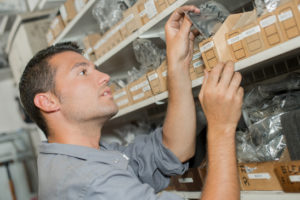 No matter how reliable any car, sooner or later you’ll have to replace parts. The timing belt, brakes, tires, light bulbs, hoses, etc. must be swapped out regularly. Other components such as the alternator or water pump can also eventually wear out.
No matter how reliable any car, sooner or later you’ll have to replace parts. The timing belt, brakes, tires, light bulbs, hoses, etc. must be swapped out regularly. Other components such as the alternator or water pump can also eventually wear out.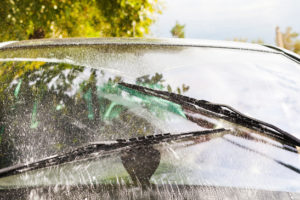
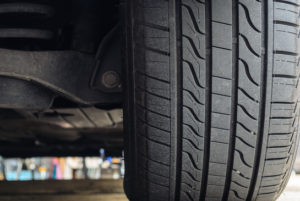 Also about once a month, you need to check the tire pressure. You can find the correct psi in the owner’s manual or on the sticker located on the driver’s doorjamb. Keeping the pressure at that listed level will prevent unnecessary wear and help save on fuel.
Also about once a month, you need to check the tire pressure. You can find the correct psi in the owner’s manual or on the sticker located on the driver’s doorjamb. Keeping the pressure at that listed level will prevent unnecessary wear and help save on fuel. The hybrid that kicked off a revolution is a tremendous vehicle for families. The US EPA estimates the 2016 model gets up to 58 mpg in the city, so you don’t have to stop at the pump nearly as often. That translates into savings every day, something every family certainly can benefit from.
The hybrid that kicked off a revolution is a tremendous vehicle for families. The US EPA estimates the 2016 model gets up to 58 mpg in the city, so you don’t have to stop at the pump nearly as often. That translates into savings every day, something every family certainly can benefit from.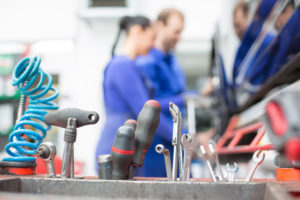 Sometimes you need a truck without all of the usual headaches that come from owning one. The Toyota Tacoma was built for families who are active, which is why a GoPro mount is included on the windshield. Instead of being large and unruly, you’ll find that maneuvering the Tacoma is easy. The backseat is comfortable and large enough to fit child seats without any hassle.
Sometimes you need a truck without all of the usual headaches that come from owning one. The Toyota Tacoma was built for families who are active, which is why a GoPro mount is included on the windshield. Instead of being large and unruly, you’ll find that maneuvering the Tacoma is easy. The backseat is comfortable and large enough to fit child seats without any hassle. Minivans are incredibly practical for families, and the Toyota Sienna is a low-maintenance way to have one. Not only does it include a large interior with room to fit adults on all three rows, it’s loaded with clever storage areas as well. An optional system uses a microphone to project the driver’s voice through the rear speakers, making it unnecessary to yell to have conversations with anyone sitting on the third row.
Minivans are incredibly practical for families, and the Toyota Sienna is a low-maintenance way to have one. Not only does it include a large interior with room to fit adults on all three rows, it’s loaded with clever storage areas as well. An optional system uses a microphone to project the driver’s voice through the rear speakers, making it unnecessary to yell to have conversations with anyone sitting on the third row.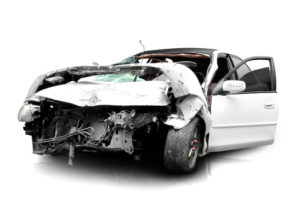 First off, you should look for a Lexus certified collision center. They’re not on every street corner, so that eliminates quite a few options. You wouldn’t want to take you beloved car to a hack, or someone who says they can fix it, but in reality doesn’t know how to do it. Lexus body repair can be a tricky job even if you’re doing it correctly, so this kind of work should only be reserved for highly trained and seasoned technicians.
First off, you should look for a Lexus certified collision center. They’re not on every street corner, so that eliminates quite a few options. You wouldn’t want to take you beloved car to a hack, or someone who says they can fix it, but in reality doesn’t know how to do it. Lexus body repair can be a tricky job even if you’re doing it correctly, so this kind of work should only be reserved for highly trained and seasoned technicians.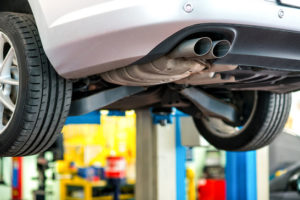 Body repair is a horse of a different color when compared to other types of car repairs. With dealerships, they’re under extreme pressure to boost profits. You might think this is no big deal, but it changes things. This push for bigger profits is being driven by the fact that how much a dealer makes from new vehicle sales is decreasing. You’ve probably noticed that dealerships talk up their service department more than ever, and this is why.
Body repair is a horse of a different color when compared to other types of car repairs. With dealerships, they’re under extreme pressure to boost profits. You might think this is no big deal, but it changes things. This push for bigger profits is being driven by the fact that how much a dealer makes from new vehicle sales is decreasing. You’ve probably noticed that dealerships talk up their service department more than ever, and this is why.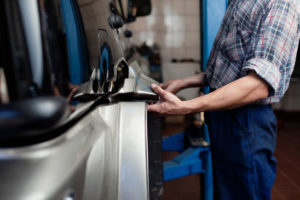 Some dealerships don’t even do body repairs themselves. Instead, they outsource to an unnamed shop, so your car goes to a place you don’t know. One would hope they do good work, but with an emphasis on profitability at dealers, this sadly isn’t the case far too often.
Some dealerships don’t even do body repairs themselves. Instead, they outsource to an unnamed shop, so your car goes to a place you don’t know. One would hope they do good work, but with an emphasis on profitability at dealers, this sadly isn’t the case far too often.








